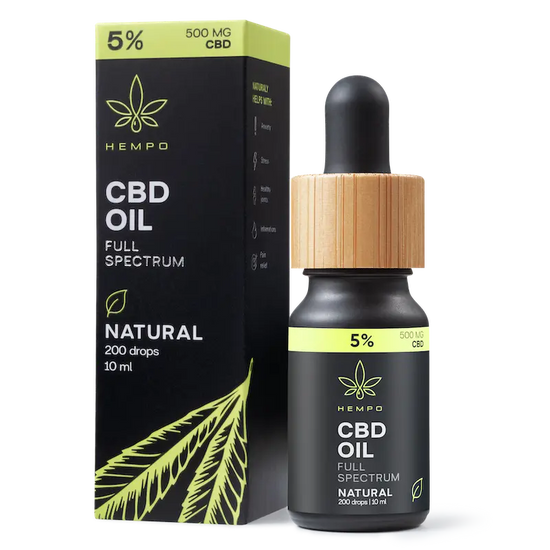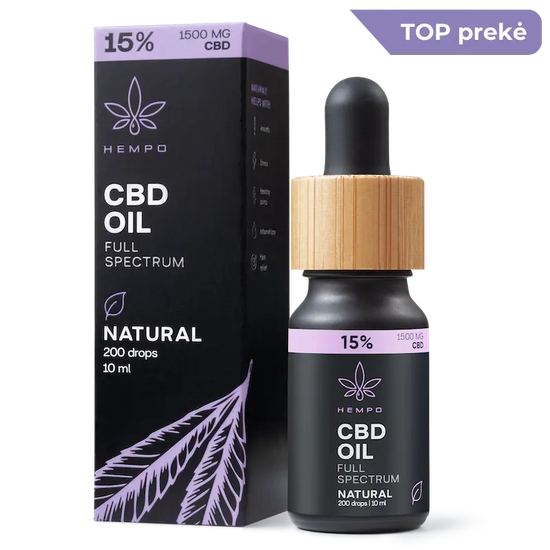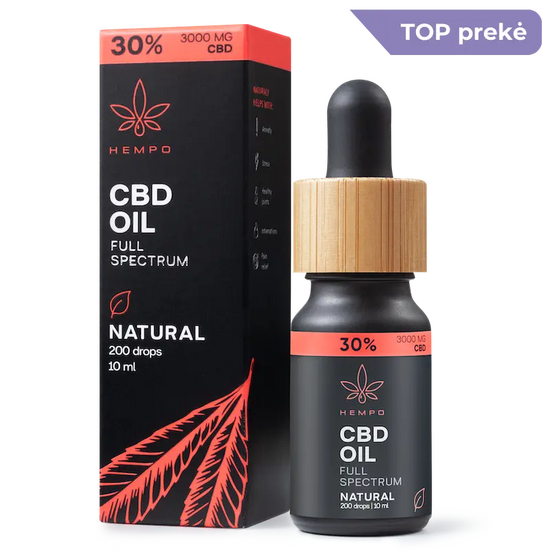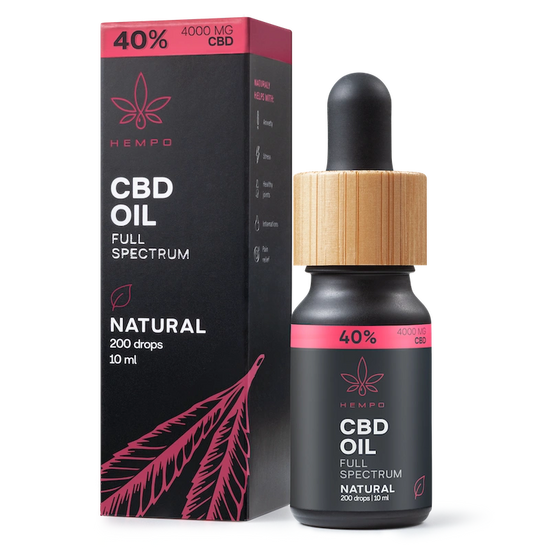Cannabinoids: What are they?
"Cannabinoids - what are they?" is a question that many people have when first encountering Cannabidiol (CBD). This is just one of the many cannabinoids found in fibrous hemp plant. Cannabinoids are natural chemical compounds found in hemp plants. There are over 100 different cannabinoids, each with unique properties and varying effects on the human body. One of the most popular among them is CBD (Cannabidiol).
Some of them can provide significant benefits to the human body: each cannabinoid has a unique effect. The Hempo team decided to tell more about these valuable materials, their benefits and use.
Table of Contents
Note: This and other articles on Hempo's blog are for informational purposes only. According to the directive of the European Commission, cannabidiol is classified as a 'novel food', therefore products with CBD should not be used as a food supplement in Lithuania.

The most commonly found cannabinoids
Although scientists have found over a hundred different cannabinoids in hemp plants, the most well-known compounds are:
- Cannabidiol (CBD). At the end of the 2021 CBD oil became legal in Lithuania and became extremely popular. This cannabinoid is non-intoxicating and non-psychoactive. It is widely used all over the world for cosmetic purposes, as well as for treating pain, alleviating the symptoms of various diseases (from depression to oncological diseases), helps to fight psychological and emotional ailments, also can help with insomnia.
- Tetrahydrocannabinol (THC). Sometimes THC is confused with CBD, but these two substances are very different and should not be confused with each other. Tetrahydrocannabinol (THC) is a psychoactive compound that causes hallucinations in some people, has an intoxicating effect and is only allowed in Lithuania at a concentration of up to 0.2%.
- In order to try hemp products, it is worth paying attention to other cannabinoids, such as cannabinol (CBN). It provides a calming effect, which is why in some countries it is applied to people with neurodegenerative diseases such as Parkinson's disease, Alzheimer's. Its benefits are backed up by scientific research.
- Another valuable cannabinoid is cannabigerol (CBG). This compound may have antibacterial and anti-inflammatory properties, may help slow the growth of tumors and cancer cells. CBG is believed to stimulate bone growth and improve appetite.
- One more compound is worth mentioning: cannabichromene (CBC). Conducted studies substantiate that it provides pain-relieving, anti-inflammatory effects.
Where Are Cannabinoids Found?
Cannabinoids in medicine
How quickly do cannabinoids take effect?
How fast and how strong the cannabinoid effect will be depends a lot on the way of use. For example, CBD oil is most commonly taken orally - by sublingual drops, capsules, chewing gum or other cannabidiol supplements. Then the effect appears in about 30-60 minutes.
In order to achieve a local effect of cannabinoids, usually to relieve pain in certain parts of the body, these substances should be used externally. Oil, gel cream applied to the skin are perfect for this, as well as CBD transdermal patches, which release cannabinoid active substances into a concentrated area of the body.
Cannabinoids can also be smoked or vaporized (for example, CBD, in the form of hemp flowers). Then the effect appears faster, within a few or a dozen minutes. True, the effect lasts for a shorter time.
What problems do cannabinoids solve?
Cannabinoids can be useful for a variety of health problems such as:
- Muscle pains - fatigue after a grueling workout, strain after an injury are the most common reasons why we experience muscle pain. Whatever the origin of the pain, cannabinoids can help. For this, it is worth choosing cannabidiol and using it locally: you can apply CBD gel on the painful area or apply a transdermal patch. The pain will soon be noticeably reduced!
- Stress - financial obligations, tension at work, professional competition can become the cause of constant stress. If it is not possible to relieve stress, in the long run it can cause psychological ailments, lead to weight changes, and increase the risk of heart diseases. The good news is that with the help of cannabinoids, overcoming stress is much easier. CBD products containing CBD, CBN, CBG calm, reduce tension, help you relax faster.
- Chronic diseases - most chronic diseases (and also their treatment methods) have unpleasant symptoms. It can be nausea, body pains, inflammatory processes in the body. These sensations interfere with relaxation and concentration, worsen the general well-being and quality of life of patients. Cannabinoids such as CBD, CBC, CBG combat the aforementioned symptoms and help you feel better.
- Emotional disorders - Sleep disorders, constant feeling of anxiety, depression are emotional disorders that many people of all ages face. In addition to conventional medications, it is worth trying cannabinoids, which are natural, do not cause physical dependence, but have a calming effect, can improve mood, and help you fall asleep more easily.
- Poor skin condition - Fiber hemp products are used for cosmetic purposes. Many cannabinoids have antibacterial, anti-inflammatory properties, making them great for fighting acne. Products containing cannabinoids do not dry out the skin, they nourish it, and are suitable for different types of skin, young and mature.
What are endocannabinoids?

What are phytocannabinoids?
Cannabinoids and the endocannabinoid system
After discussing cannabinoids and their benefits, it is equally important to find out their mechanism of action. Once in the body, most cannabinoids work by interacting with the endocannabinoid system (ECS). It is a complex biological system located in the central and peripheral nervous system. It is responsible for extremely important processes in the human body: EKS helps regulate appetite, sleep rhythm, emotional well-being, pain, reaction to the environment and much more.
To better understand the functioning of the endocannabinoid system, it can be compared to the CEO of a company, who oversees the quality of work of employees (organs and systems of the body). If the functioning of this system falters, the whole body can feel the negative consequences.
The EC system consists of cannabinoid receptors (endocannabinoids) located throughout the body: from the brain to connective tissues and even cells. Although the endocannabinoid system can perform various functions in different tissues and organs, its ultimate goal is the same: to ensure the stability of the body's functioning, regardless of changes and stimuli in the external environment. This stability is also called homeostasis.
Consistent use gives best results
Cannabinoids are natural compounds whose benefits are slowly being revealed. In order to achieve a long-lasting effect, it is recommended to use them continuously. With regular use of these products, you will see truly great results for your physical and emotional health, beauty and overall well-being.
A summary
We hope we have answered the burning question about cannabinoids, their origin and use. We hope this will lead to more fiber hemp products being incorporated into everyday life. Try it and see for yourself: CBD, CBC, CBG and other beneficial cannabinoids have a gentle but effective effect on the body!





